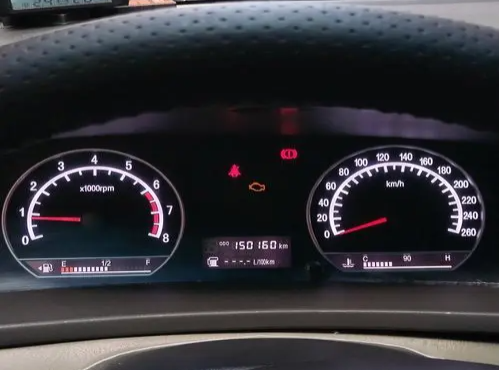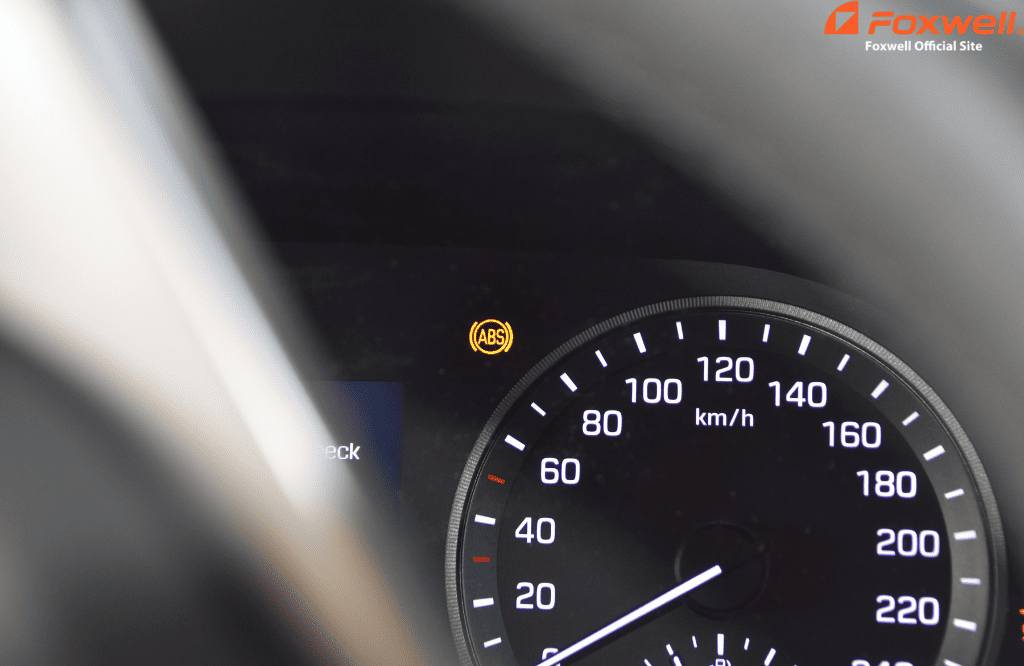When your OBD-II scanner shows the P0141 trouble code, it means that the vehicle has detected an abnormality in the heating circuit of the oxygen sensor (O2 Sensor), specifically at the location of Bank 1 Sensor 2. This fault directly leads to excessive exhaust emissions, the engine malfunction indicator light on the dashboard turning on, a decrease in fuel efficiency, and damage to the catalytic converter. As a vehicle owner, you need to intervene in a timely manner.
This article will guide you to understand the trouble code P0141, as well as its causes and symptoms.
What Is an O2 Sensor Heater?

When the OBD-II system triggers the P0141 trouble code, it indicates that the vehicle has detected an abnormality in the heating circuit of Bank 1 Sensor 2 (the second oxygen sensor in the first bank). This code directly points to the failure of the built-in heater, which is a core functional component of the oxygen sensor (O2 Sensor). To understand the root cause of this fault, we need to start with the operating principles of the oxygen sensor and its heater.
The oxygen sensor is used to monitor the oxygen content in the exhaust gas, helping the engine control unit (ECU) adjust the air-fuel ratio. The heater is a core component of the sensor. Its function is to heat up quickly during cold starts, enabling the sensor to reach the operating temperature (above approximately 300°C) as soon as possible and ensuring that it enters a state of precise detection.
If the heater fails, the sensor cannot be activated in a timely manner during the cold engine stage. The ECU will be forced to rely on preset fixed parameters to control the fuel injection, resulting in two major consequences: Firstly, the imbalance of the air-fuel ratio will lead to increased fuel consumption and excessive emissions. Secondly, long-term operation in the "open loop" state may damage the catalytic converter.
What Does the Code P0141 Mean?
The P0141 trouble code specifically refers to "Oxygen Sensor Heater Circuit Malfunction (Bank 1 Sensor 2)".
When the vehicle diagnostic system reads the P0141 trouble code, it clearly points to an abnormality in the heating circuit of Sensor 2 (the second oxygen sensor) downstream of Bank 1 (the first cylinder bank) of the engine. This sensor is located behind the catalytic converter and is a key component for monitoring the exhaust gas purification efficiency. In a V - type or horizontally - opposed engine layout, Bank 1 usually refers to the independent cylinder bank that contains cylinder No. 1. For an in - line engine, there is only one Bank, so there is no need for such a distinction. The core responsibility of Sensor 2 is to evaluate the working efficiency of the catalytic converter by detecting the oxygen content behind it in real - time and feed the data back to the ECU to optimize emission control.
The triggering of P0141 is directly related to the circuit fault of the built - in heater of Sensor 2. Whether it is an open circuit, a short circuit in the wiring, or the resistance value of the heating element exceeding the standard range, it will cause the sensor to fail to quickly heat up to the operating temperature during cold starts.
Related Reading: Decoding the O2 Sensor Voltage Range: A Dance of Precision in the Engine's Hear
Is P0141 Serious? Can You Keep Driving?
Although the P0141 trouble code won't make your vehicle break down immediately, it can cause potential "boiling frog" - style damage. During cold starts, due to the failure of the oxygen sensor heater, the engine control unit can't accurately adjust the air - fuel mixture ratio. As a result, fuel consumption may soar by 10% - 15% (which means you can drive 50 - 80 kilometers less per tank of gas). Some car owners may also feel obvious vibrations when starting the cold car and even notice an unpleasant smell from the exhaust.
In the short term, you can continue driving for 1 - 2 weeks (for example, for your daily commute or as a stop - gap measure before taking the car to a repair shop). However, you need to be aware of two potential problems: one is the extra cost caused by increased fuel consumption, and the other is that excessive emissions may lead to a failed vehicle inspection.
If you delay the repair for several weeks or more, it will accelerate the aging of the catalytic converter, which may eventually result in a high - cost repair bill of over ten thousand yuan. Therefore, it is recommended to have your vehicle inspected and repaired as soon as the trouble light comes on to avoid turning a minor issue into a major headache.
What causes code P0141?
- Circuit problems: The heater wiring may be short - circuited, open - circuited, or corroded (this is common in humid or salt - exposed environments).
- Heater damage: The heating element may be aged or broken inside.
- Fuse/relay failure: The fuse that supplies power to the heater may be blown, or the relay may fail.
- ECU failure: This is extremely rare and should only be considered after ruling out other possibilities.
What are the Common Symptoms of the P0141 Code?
- The yellow engine trouble light on the dashboard lights up.
- The freeze frame data stores the P0141 code.
- There may be unstable idle speed or brief vibrations during cold starts.
- Fuel consumption increases (because the ECU can't accurately adjust the air - fuel ratio).
- The vehicle fails the emission test, and there may be other trouble codes (such as P0420 for low catalytic converter efficiency).
How to diagnose code P0141
-
Locate the fuse
Find the fuse corresponding to the oxygen sensor heater circuit (usually located in the engine compartment fuse box). If it's blown, replace it with a fuse of the same specification and check for potential short - circuit issues.
-
Visually inspect the wiring and plugs
Locate the Bank 1 Sensor 2 oxygen sensor (behind the catalytic converter). Check if the wiring harness is worn, charred, or corroded, especially in areas near the exhaust pipe which are prone to high - temperature effects.
-
Test the heater function
Step 1: Test the heater resistance
First, disconnect the sensor plug. Use a multimeter to measure the resistance across the heater terminals (the standard value is 4 - 6Ω). If the resistance is infinite (open - circuit) or close to 0Ω (short - circuit), the sensor needs to be replaced.
Step 2: Check the power supply voltage
Turn the ignition to ON (without starting the engine) and measure the voltage of the power supply wire of the heater circuit (normally it should be the battery voltage, 12V).
-
Use an OBD2 scanner for diagnosis
Read the Bank 1 Sensor data stream through the OBD2 scanner. Observe the temperature change rate of Sensor 2 (normally it should reach 600°F within 2 minutes). If the temperature rise is slow or stops, it confirms that the heater has failed.
Conduct a freeze - frame analysis to view data such as engine load and coolant temperature when the fault was triggered, which can help locate the cause (e.g., the fault was triggered during a cold start).
-
Test the wiring continuity
Pay special attention to the wiring from the sensor to the ECU (common wear points are near the exhaust pipe).
How to Fix the P0141 Code
- Replace the oxygen sensor: If the resistance of the heater is abnormal, directly replace Sensor 2 (choose an original - equipment or a matching model).
- Repair the wiring: If the wiring is damaged, repair it by soldering and then insulate it with heat - shrink tubing. Avoid simply wrapping it with tape as it may easily come off.
- Replace the fuse/relay: Replace the parts with ones of the same specification and check for potential circuit overload issues.
- ECU diagnosis: If all the above steps show normal results, a professional technician is needed to test the output signals of the ECU.
- Clear the code and take a test drive: After completing the repairs, use an OBD2 scanner to clear the trouble code and perform a full driving cycle for verification.
Accurately Diagnose P0141 with an OBD2 Scanner
When the P0141 trouble code lights up on the dashboard, the first step isn't to blindly replace the oxygen sensor. What you need to do first is to precisely identify the root cause of the problem.
As a powerful tool for car owners to conduct self - inspections, the Foxwell OBD2 scanner supports one - click reading of all trouble codes, including P0141. It can also deeply analyze the ECU data stream. For example, it can monitor the voltage fluctuations of the oxygen sensor and the status of the heating circuit in real - time, and even compare the temperature - rising curve of Sensor 2 during cold starts. All this data can help you distinguish between "circuit faults" and "sensor damage", avoiding additional costs caused by misjudgments.
If you need to accurately diagnose P0141 and similar circuit faults, it is recommended to choose a Foxwell scanner device that supports bidirectional control and the J2534 protocol. Such tools can directly control the heater circuit through the ECU, greatly improving the diagnosis efficiency. You can check this guide to choose a suitable OBDS scanner.
Verification after repair is also crucial. After replacing the sensor or repairing the wiring, you need to use the OBD2 scanner to clear the trouble code and perform a full driving cycle for verification. You can follow the following specific process: After cold - starting the vehicle, let it idle for 5 minutes, then drive at a medium speed for 10 minutes (maintaining a speed of 40 - 60 km/h), and finally drive at a high speed for 5 minutes (above 80 km/h). During this process, you can use the mobile app connected via Bluetooth/WiFi to monitor in real - time whether the time for Sensor 2 to reach the standard temperature (should be ≤ 90 seconds), or use the "Readiness Monitors" function to confirm that the system has been reset to the "Complete" state. These two indicators are the core basis for judging whether the fault has been completely repaired.
FAQs
Can a bad catalytic converter cause a P0141 code?
The P0141 trouble code is usually directly triggered by problems in the heating circuit of the oxygen sensor (Bank 1 Sensor 2), rather than by a faulty catalytic converter. If the catalytic converter is severely clogged, resulting in abnormal exhaust temperature, it may accelerate the aging or corrosion of the sensor wiring, indirectly increasing the risk of circuit faults. In this case, trouble codes such as P0420 may also appear. However, the power supply wiring, plugs, and heating elements of the oxygen sensor should still be prioritized for troubleshooting.
Can a bad O2 sensor damage an engine?
The P0141 trouble code is typically directly triggered by issues in the heating circuit of the oxygen sensor (Bank 1 Sensor 2), rather than a malfunction of the catalytic converter. If the catalytic converter is severely clogged, causing abnormal exhaust temperature, it may accelerate the aging or corrosion of the sensor wiring, indirectly increasing the risk of circuit faults. In such cases, trouble codes like P0420 may also appear. However, priority should still be given to checking the power supply wiring, plugs, and heating element of the oxygen sensor.
You Might Also Like
- How to Use an OBD2 Scanner to Diagnose an O2 Sensor
- Best All-Around OBD Scanner for Diesel and Gas Vehicles




Leave a comment
This site is protected by hCaptcha and the hCaptcha Privacy Policy and Terms of Service apply.